Mountain goats are fluffy, white-coated animals excellently suited to the mountain landscapes they call home.
They are actually not true goats but are close relatives known as goat antelopes.
Mountain goats live at heights up to 13,000 feet in mountain ranges across the western part of the North American continent.
These powerful and nimble beasts can climb seemingly impossible cliffs and jump up to 12 feet (4 meters) in one bound.
A furry white coat protects and camouflages the mountain goats during winter and is shed in summer.
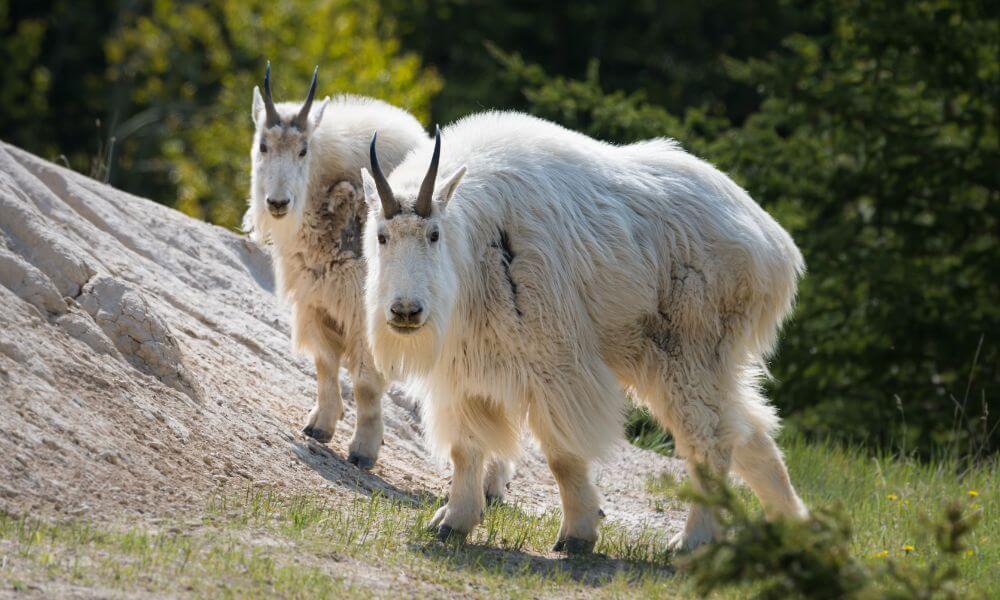
How many mountain goats are there in the world?
Population data for mountain goats is sparse.
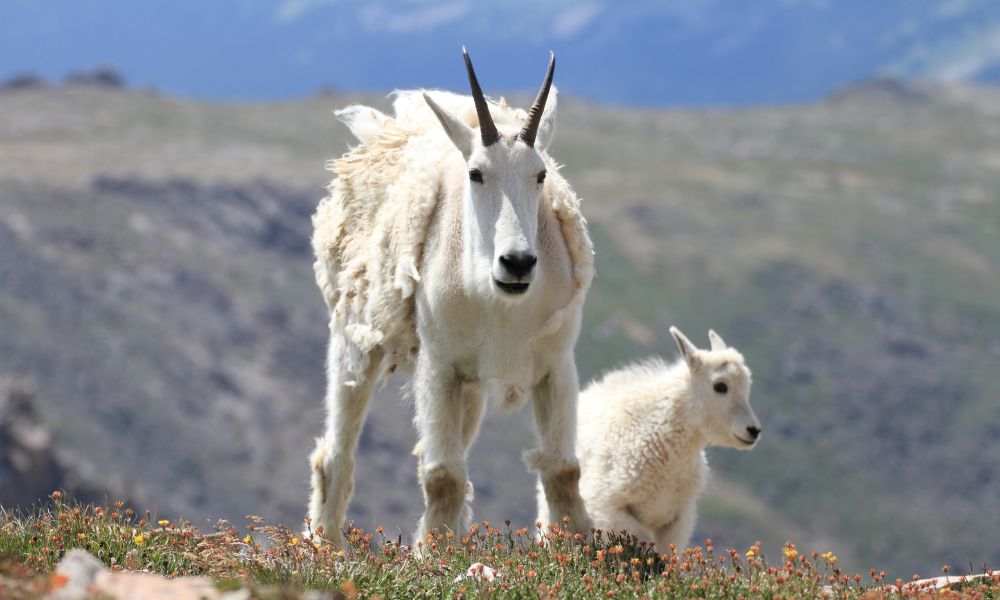
Mountain goats are one of the least studied mammals in northern America, mostly due to their extreme living conditions and their efficient camouflage that makes them hard to spot.
According to a 2010 Myatt and Larkins population estimate, there are (optimistically) over 100,000 mountain goats in North America, split between the USA (37,000 to 47,000) and Canada (43,700 to 70,200).
British Columbia in Canada has the most mountain goats with estimates ranging between 39,000 and 65,500 with around 5,000 mountain goats in other Canadian regions. Most of the mountain goats in the USA live in Alaska (24,000 to 33,500) and the other 13,000 in the contiguous states.
Because this is the only reliable mountain goat population estimate made, it’s difficult to measure any population changes.
However, due to low levels of predation and seemingly low human effects, their population appears stable.
What affects the mountain goat population?
Only a few direct factors affect the mountain goat population since they live high up on mountain ranges where few other life forms exist.
Nevertheless, their fragile habitat can easily be destabilized by secondary factors.
Predators
The most common predators mountain goats face are grizzly bears, wolves, and cougars.
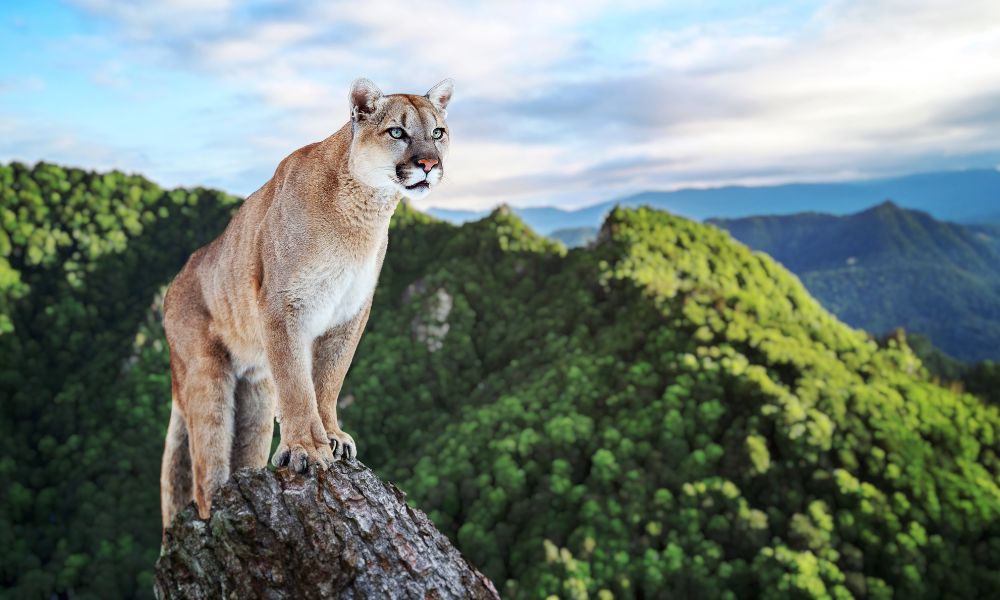
Eagles and wolverines also target young kids.
Mountain goats climb up on cliffs and various precarious places other animals cannot reach as a form of defense.
This, coupled with the mountain goat’s excellent camouflage, makes them difficult for predators to catch.
Mountain goats are not completely helpless though.
In 2021, a nannie gored a grizzly bear to death protecting her kid, and of the over 300 Golden eagle attacks observed against a mountain goat nannie and her young, none have succeeded.
Parasites
Three studies that were done on mountain goat parasites found between 13 and 15 species of ticks, worms, and other parasites infesting the goats, although none were found to have a large effect on their lifespan.
The very cold conditions most mountain goats live in are inhospitable for many parasites, meaning that mountain goats usually are infested in the winter months when they graze in lower, warmer areas.
Humans
Nannies (female mountain goats) are most vulnerable in winter when conditions are bad.
Because of this, they often find themselves as the target of hunters and poachers looking for easy kills.

Nannies are vital to the survival of the mountain goat population since they can only carry one or two kids a year.
Mountain goats are hunted for wool and sometimes their horns and meat.
Thankfully, there’s not a large market for any mountain goat products, with hunting mostly limited to indigenous people.
The biggest effect humans have on mountain goats is habitat destruction.
Logging and climate change are changing the environment they live in, chasing them deeper into more extreme areas of the mountains.
What do mountain goats need to survive?
Food
While mountain goats are very resilient, they still need a reliable source of food to survive.
Mountain goats feed on grasses, lichen, and shrubs in the summer months.
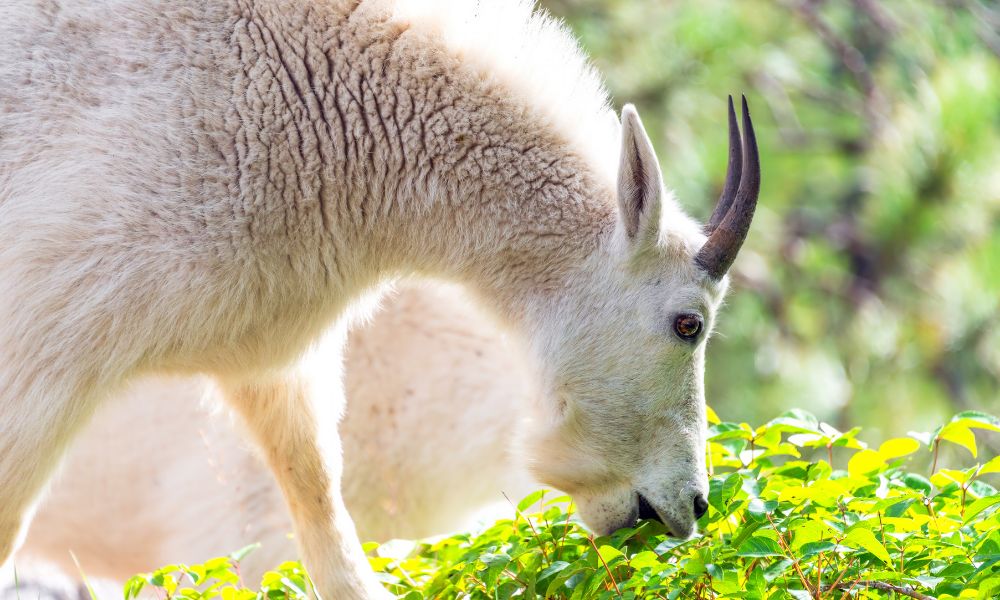
In the wintertime, they eat bark, lichen, and moss at lower elevations.
They also love to find natural salt licks to get the essential nutrients that balance their diet.
Most of their water comes from the food they eat, although they often drink at rivers and lakes if they aren’t frozen.
Habitat
Mountain goats migrate between lower, warmer areas in the winter and higher, cooler areas in the summer.
They prefer colder weather, even though they shed much of their thick winter coat as it gets warmer.
Herd
Most nannies live in loose-knit groups of up to 50 mountain goats.
Males usually prefer to live alone or in small groups as they roam around.
Groups are bigger in the winter and smaller in the summer.
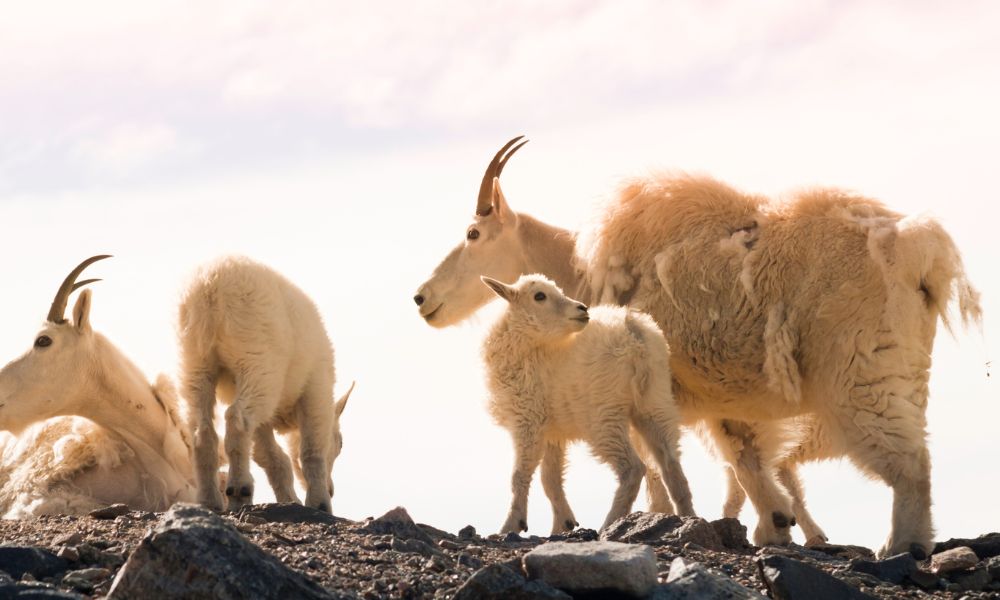
Moving in groups helps vulnerable nannies and kids to have a better chance of survival.
Their social hierarchies are orderly and rarely have a negative effect on individual mountain goats.
If they’re caught alone in the wild, they’re at a much higher risk of predation.
Can humans work to improve mountain goat populations?
Yes, we can!
We as humans have the most power to make a positive change for mountain goats.
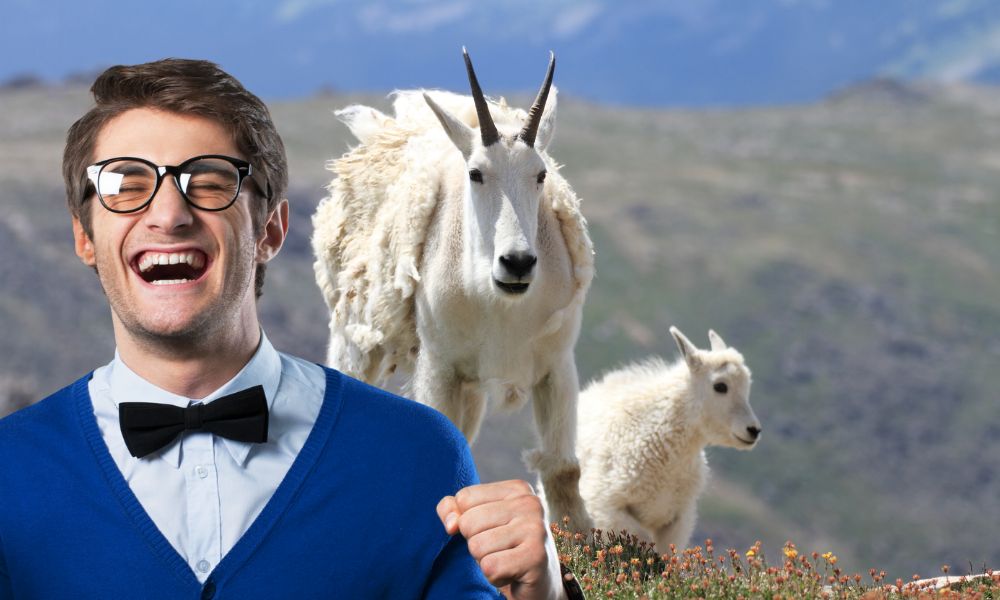
While they aren’t considered endangered, we are still very limited in our knowledge of their historical population numbers.
What we do know is that climate change and commercial human activities are shrinking the mountain goat’s habitat, leaving them more vulnerable to predators and with less places to find food.
It’s our responsibility to ensure that our actions aren’t hurting the mountain goat population.
Instead, we can work on preserving conservation areas so that they can live in a stable environment.
Mountain goats may seem like fluffy cuties, but their large size and aggressive protection of their young make them a force to be reckoned with.
Even so, their resilience is being tested by a warming climate as we are unable to keep an effective tab on their population numbers.
While mountain goats aren’t endangered, we should still be looking out for them and the other animals by preserving their natural habitat.
